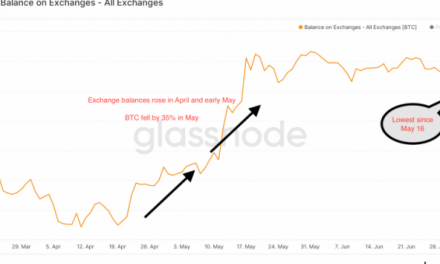As the leading cryptocurrency’s momentum slows down, analysts gauge where the situation may lead in the coming weeks and months.
Over the past few weeks, Bitcoin’s value has been steadily going downward. More so this week: the cryptocurrency came close to the lower band of its Trading Envelope Indicator, which may mean that a further drop can test its current major support level (MSL.)
Bitcoin continues to dip
As of press time, the Bitcoin MSL is pegged at $30,000; if it dips lower, analysts opine that it may not be able to sustain its current trading range. On the other hand, if it manages to rally back up, Bitcoin would be in a position to test its current upper trading band – valued at around $36,000 – yet again.
Last week, Bitcoin trading was up by a measly 1%, closing at $32,841. It has, however, stayed within its range between $32,000 and $34,000 since the end of the second quarter.
But analysts are wondering how much longer Bitcoin will remain an inflation hedge of choice. Brian Walsh Jr., senior financial adviser at Walsh & Nicholson Financial Group, feels that Bitcoin and other cryptocurrencies are still a highly speculative market that needs to prove itself to an increasingly skeptical public. This is despite how Bitcoin and other cryptos have already been adopted as a mode of payment or investment by several institutions.
One factor that is currently affecting Bitcoin’s momentum is the recent spike in costs caused by the reopening of the US economy following mass vaccination drives throughout the country. As a result, US customers paid higher prices in June and those paid to producers were also higher than projected rates.
Still viable, according to loyalists
Bitcoin loyalists, however, insist that it and other cryptocurrencies like Ethereum’s ether and Ripple’s XRP are a viable hedge against rising prices and the printing of excess money by central banks around the world. Unlike traditional currencies like the US dollar or the British pound, there is a finite and limited supply of these tokens. Essentially, Bitcoin and other crypto tokens cannot be devalued by any government or central bank through over-printing and excessive distribution.
Critics are, however, worried that Bitcoin may find itself in for a grim time in the second half of the year. The cryptocurrency hit a record peak of $65,000 in April of this year, but has since tumbled down by nearly 45% as of the end of Q2-2021.
For his part, The Wealth Alliance president and managing director Eric Diton feels that Bitcoin is due for a pullback. Diton cited harsher regulation against Bitcoin and other cryptocurrencies worldwide, particularly in China and the United Kingdom as a “spirit-dampener” for many crypto enthusiasts. These restrictions are expected to have serious repercussions on the sector in the coming months.















